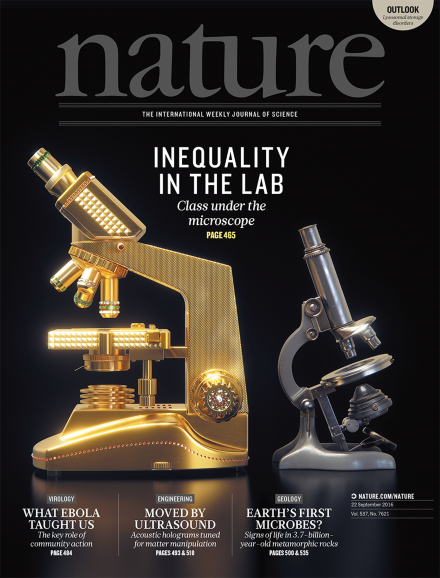Volume 537 Issue 7621, 22 September 2016
Editorial
World View
Research Highlights
Seven Days
News
Correction
News Feature
Comment
-
End class wars
Special:
Books & Arts
Correspondence
Obituary
News & Views
Article
Letter
Corrigendum
Feature
Futures
Brief Communications Arising
Outlook
-
Lysosomal storage disorders
Nature Outlook:
-
Myriad maladies
Nature Outlook:
-
Biomedicine: A rare opportunity
Nature Outlook:
-
Perspective: The rare must become common
Nature Outlook:
-
Advocacy: Strong foundations
Nature Outlook:
-
Drug development: Through the barrier
Nature Outlook:
-
Gene therapy: A new chapter
Nature Outlook:
-
Perspective: Finding common ground
Nature Outlook:
-
Screening: Baby's first test
Nature Outlook:

